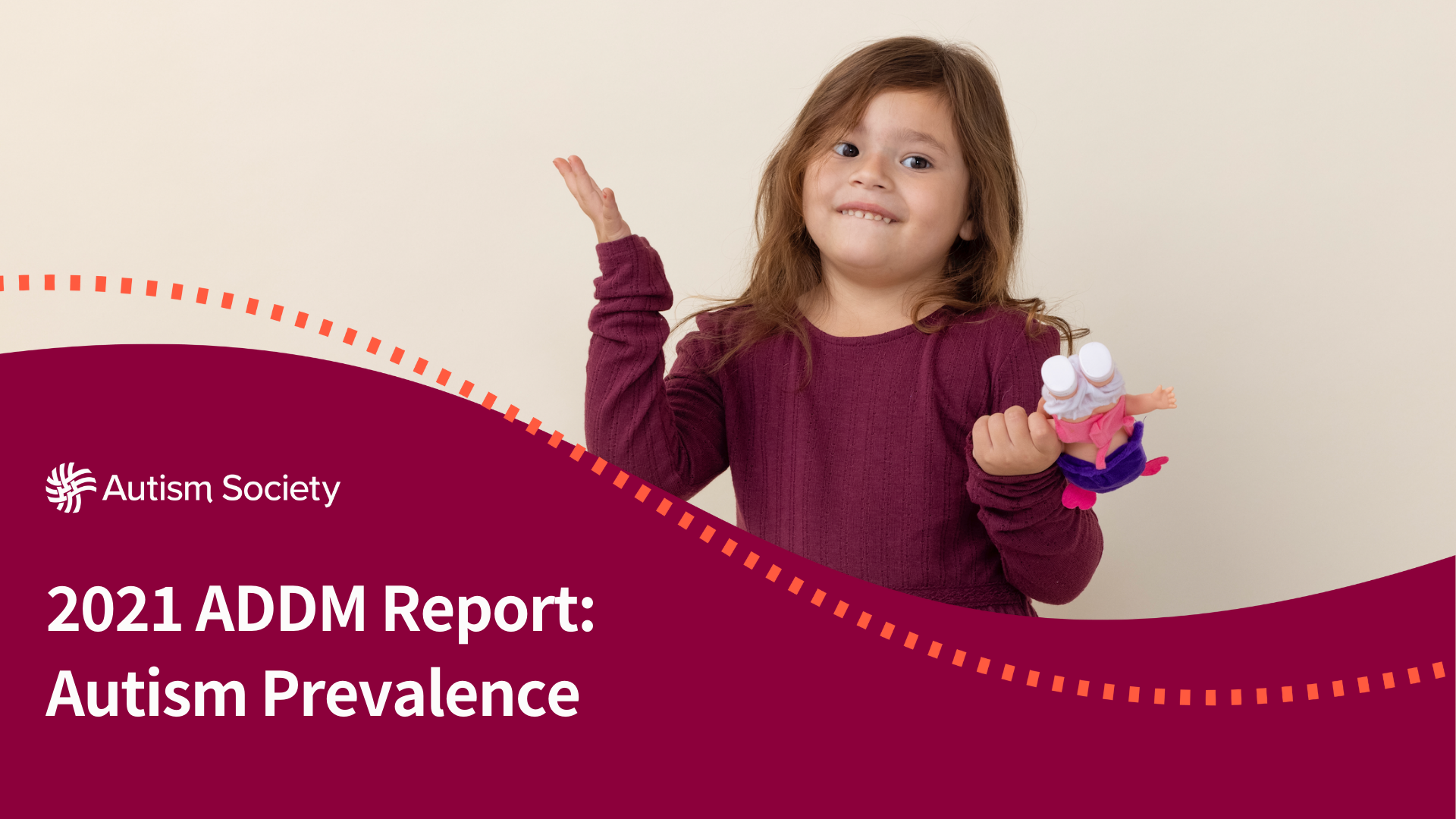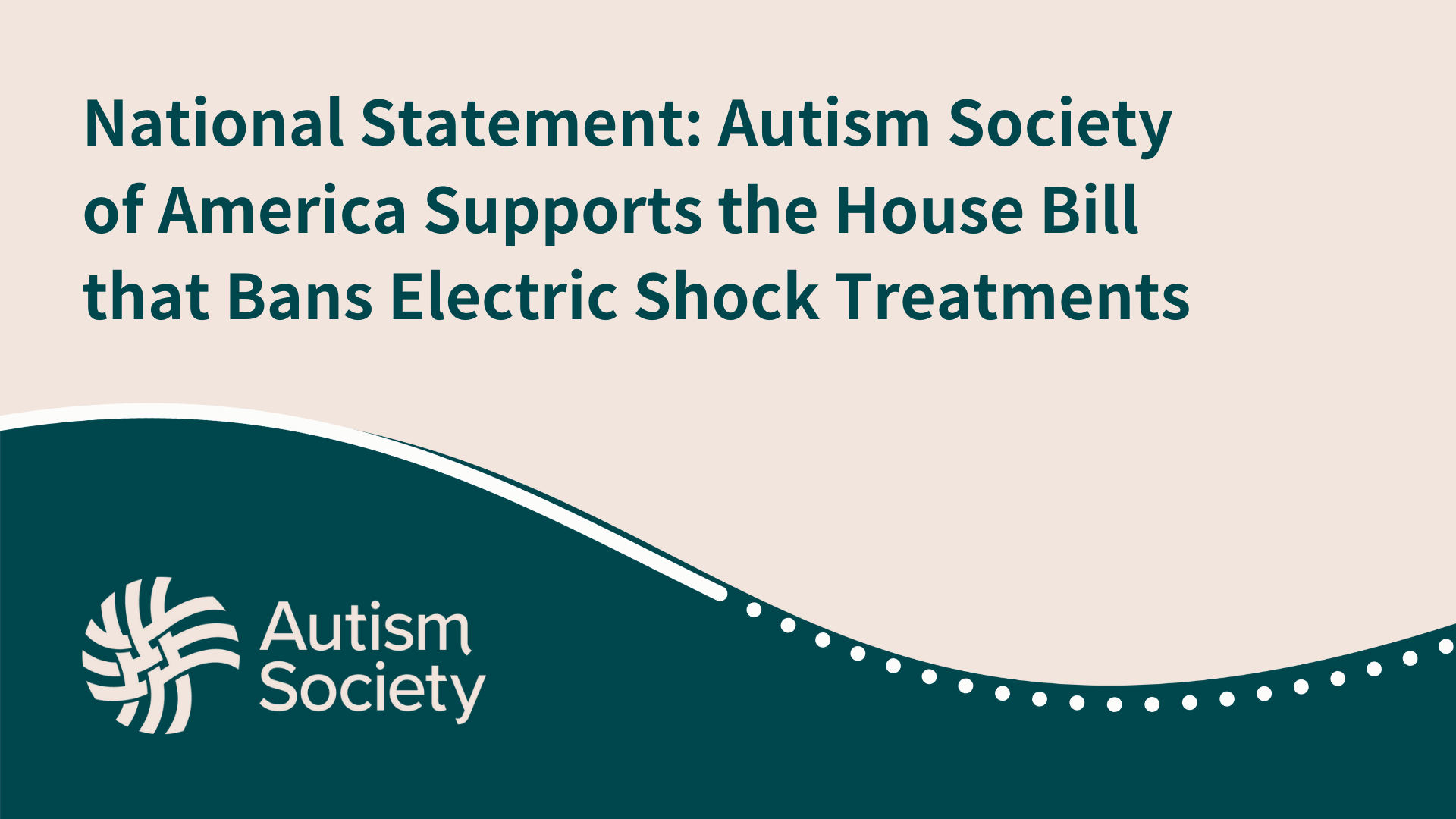
The ADDM Network Details Autism Prevalence Rate Increases to 1 in 44 Children.
Rockville, MD, December 2, 2021 – The Centers for Disease Control and Prevention (CDC) released updated data surrounding Autism prevalence rates that show a slight increase in the number of children diagnosed with Autism from one in 54 to one in 44. The Autism Society routinely reviews these reports to disseminate information, continue to advocate for necessary policy changes, and to better support the Autism community.
Consistent with previous reports, the increased national Autism prevalence rate is not attributed to one factor, but a variety, including a higher incidence rate that is independent of racial, ethnic and socio-economic standings, plus an increased rate of diagnosis. This stresses the urgent need for equitable access to diagnostic evaluations and services needed to support all members of the Autism community.
These findings are based on the analysis of data collected from the health and special education records (if available) of 4-year-old and 8-year-old children who lived in one of 11 different states throughout the United States in 2018.
Additionally, approximately one third of these Autistic children (35.2%) also had an intellectual disability and another 23% were classified in the borderline range. People with Autism and intellectual disability often require additional supports and services.
In several of the 11 communities studied, the prevalence of Autism Spectrum Disorder (ASD) among Hispanic children was lower than that of Black or White children. The report indicates that the lower prevalence rates for Hispanic children could be attributed to fewer opportunities for diagnostic screening. In addition, a higher percent of Black children with ASD were identified with intellectual disability compared to White or Hispanic children with ASD. This is consistent with previous reports.
The data also shows that children who receive an Autism diagnosis by age 4, are fifty times more likely to receive services. This is not surprising but confirms the need to increase our capability to screen and diagnose children as early as possible; the Autism Society recommends that children be screened at least three times before age three (9, 18, and 24 or 30 months), so that they can be referred for services and have the best chance for success in school and life.
“The Autism Society of America is not surprised to see a continued increase in the prevalence of Autism,” stated Christopher Banks, President and CEO. “Since 2000, the CDC has been tracking the Autism prevalence rate, which has been consistently increasing from one in 150 to now one in 44. While diagnostic evaluations and services have improved, equitable access to screening and support services is needed for the entire Autism community to be connected to the support they need, when they need it.”
While the updated report reflects important statistical data that assists with policy direction and support needs, there is still room for improvement.
“It is important to remember that this estimate is based on 8-year-old children living in 11 communities, it does not represent the entire population of children in the United States,” stated Dr. Jack Scott, chair of the Autism Society’s Panel of Professionals and Executive Director of FAU Center for Autism and Related Disabilities. “The Autism Society urges the CDC to increase its reach by expanding the number of sites to areas that represent large population centers and BIPOC communities.”
The Autism and Developmental Disabilities (ADDM) network was first authorized by the Children’s Health Act in 2000. The important work of this network was reauthorized by the Autism CARES Act. This data provides important information from which researchers, policymakers, and service providers are able to make important decisions about how to best serve these individuals and their families.
See the full report published in the Morbidity and Mortality Weekly Report on the CDC website.
Visit our website to learn more about Autism, and screening and diagnosis. Connect to professional Information and Referral Specialists by contacting our National Helpline.
Share:




